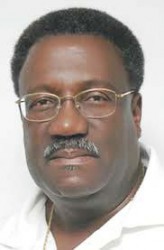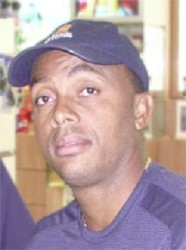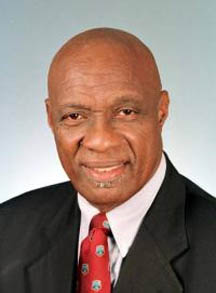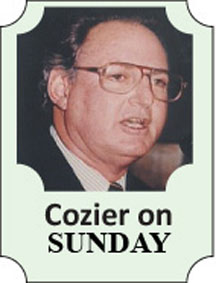ONE of Clive Lloyd’s many problems as new head of West Indies’ selectors concerns who he is.
As the most celebrated and longest serving captain during the prolonged period of West Indies’ dominance in the 1980s, subsequent team manager, International Cricket Council (ICC) match referee, cricket committee chairman and much else besides, he is now confidently expected to suddenly wave a magic wand and resurrect the golden era of his leadership after 20 long years of decline.
That Courtney Walsh, a revered West Indian who started his long and successful career under Lloyd, is one of the other newcomers on the panel simply heightens optimism.
Lloyd has been careful to immediately point out, for a host of obvious reason, how difficult a task it is.
He turned over the captaincy to Viv Richards 29 years ago. The game is all but unrecognizable from what it was then; Zimbabwe and Bangladesh were still to get Test status, lucrative franchise Twenty20 tournament were hatched quarter-century later.
Any improvement will take time and it won’t be down to him and his colleagues to make it happen. They can only hope that the pool of players from which they must choose increases in both quantity and quality.
All well and good but the pleas for patience from Deryck Murray, Lloyd’s trusted deputy during the years West Indies were building their formidable record, are all but wasted on a frustrated public for whom patience is an element long since exhausted.
There is another issue likely to confront Lloyd. Wes Hall, the tearaway fast bowler of the 1960s, was a government minister in Barbados for ten years. When he was made selector (he would later become board president) he said he “found more politics in the West Indies cricket spectrum that I found in the parliament of Barbados”.

Lloyd would be fully aware of such potential pitfalls.
It is the politics referred to by Hall that twice blocked his attempt to become West Indies Cricket Board (WICB) president. He also ruffled feathers in the corridors of the WICB when he accepted the role as head of the Guyana government’s interim management committee, appointed to oversee the operations of the Guyana Cricket Board (GCB) four years ago; it is an issue still not settled.
His installation as chief selector signals his rapprochement with the WICB.
As they needed to be, his initial comments have been realistic.
He saw the new format for first-class cricket that extends the season from one round to two, home-and-away, as crucial; it doubles the number of matches from seven to 14. There is provision for a players’ draft for the six territorial teams although the proposal that overseas pros be also be included is unlikely to see the light of day.
He reveals that support staff would be working in different areas with the players; “experienced people, guys who are accustomed to winning, guys who are professional and that’s what we need, a professional body not only on the field but off the field”. In other words, several of those from the Lloyd era.
He saw this as a “catalyst that will get us moving again”.
Yet the selectors have no control over the packed international schedule and the falling standards of domestic pitches, facilities and umpiring.
The new-look 2014-15 season runs from early November through to next March. In that period, West Indies tour India and South Africa, each for three Tests and five ODIs, before heading to Australia and New Zealand for the World Cup. No sooner than that is over, they return home for three Tests against England through April into early May.
The upshot is that domestic cricket is stripped of its best players. Inadequate conditions have steadily destroyed batsmen’s confidence and flattered ordinary bowlers. Last season, there were 10 team totals under 150, only four over 400,

none higher than Barbados’ 479 for eight declared against Trinidad. It is a recurring theme.
For all that, Lloyd remains upbeat. After all, the only way for West Indies cricket to go is up.

Given his background, it is not surprising that he places emphasis on up and coming players. His ‘get ‘em young’ policy is shaped by personal experience.
On his first assignment as captain, in India, Sri Lanka and Pakistan in 1974-75, he saw Gordon Greenidge, Viv Richards and Andy Roberts, all in their early 20s, rapidly develop into the icons they became. His scores on his own debut, against India in Mumbai in 1966-67, aged 22, were 82 and 78 not out.
Lawrence Rowe and Alvin Kallicharran were his teammates when they marked their first Tests against New Zealand in 1972 with hundreds – Rowe 214 and 100 not out to be precise.
And, of course, Garry Sobers was 17 in the first of his 93 Tests – but that’s another story.
More recent performances in the home series against New Zealand by 21-year-old opener Kraigg Brathwaite, stroke-maker Jermaine Blackwood and the towering seamer Jason Holder, both 22, would have reinforced his view.
He kept a keen eye on the recent regional under-19 tournament where he identified ‘quite a few good cricketers”. The familiar name of Chanderpaul, Tagenarine, son of Shivnarine, appeared as the Most Valuable Player.
The trick now is “trying to get them to the standard that is needed”. It was a self-evident point.
While the players of the future have ‘A’ team series and an under-19 World Cup to provide international experience, the unmatched exposure to varying conditions and long, tiring seasons Lloyd’s men enjoyed in the English county championship has passed.
Ten of the eleven who beat England in the 1979 World Cup final (Desmond Haynes would later join Middlesex) went on to end their seasons with counties; now the only one from the current team is Chanderpaul senior, with Derbyshire. And, as he marked his 40th birthday yesterday, the sun is gradually setting on his long and illustrious career.
West Indies now have to do it on their own. Clive Lloyd’s new role is only one step towards a solution.






